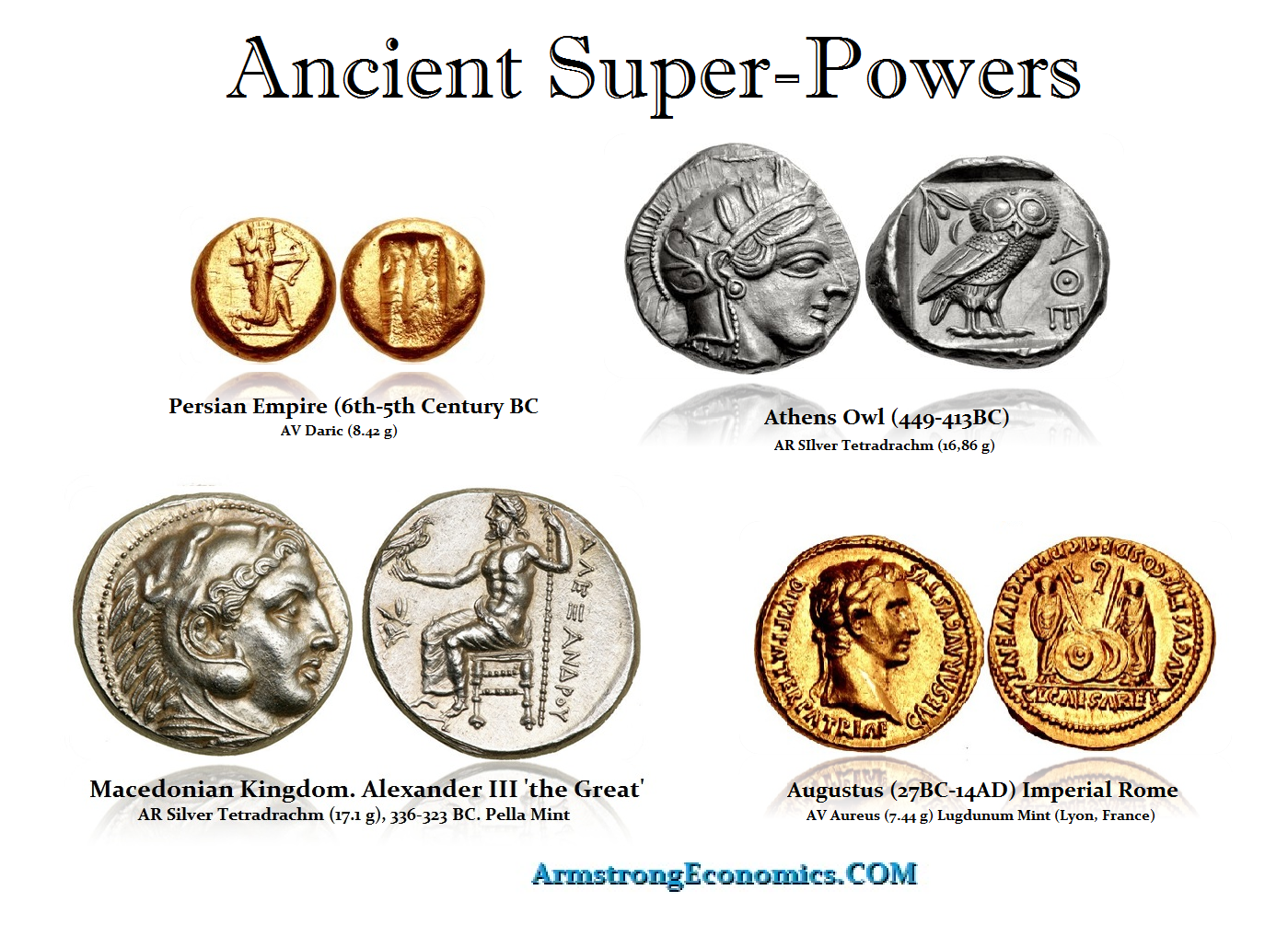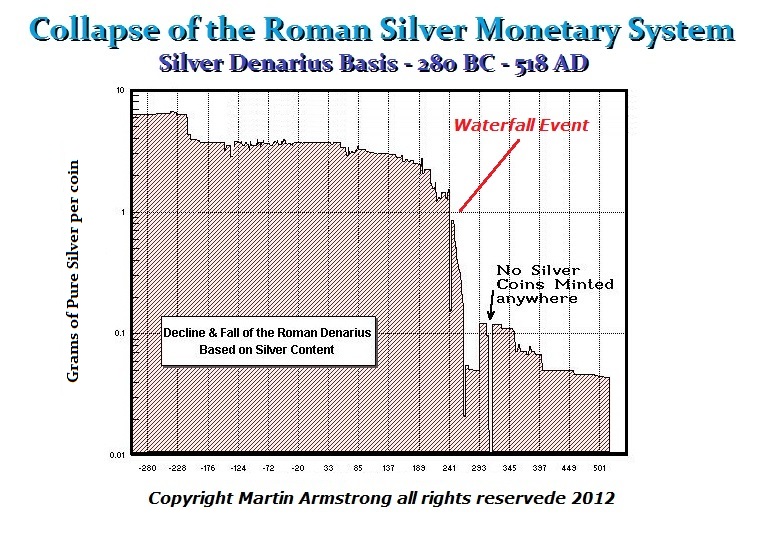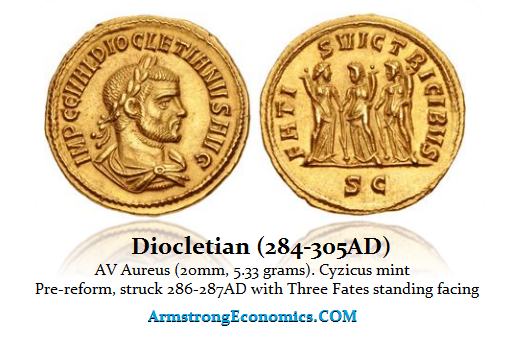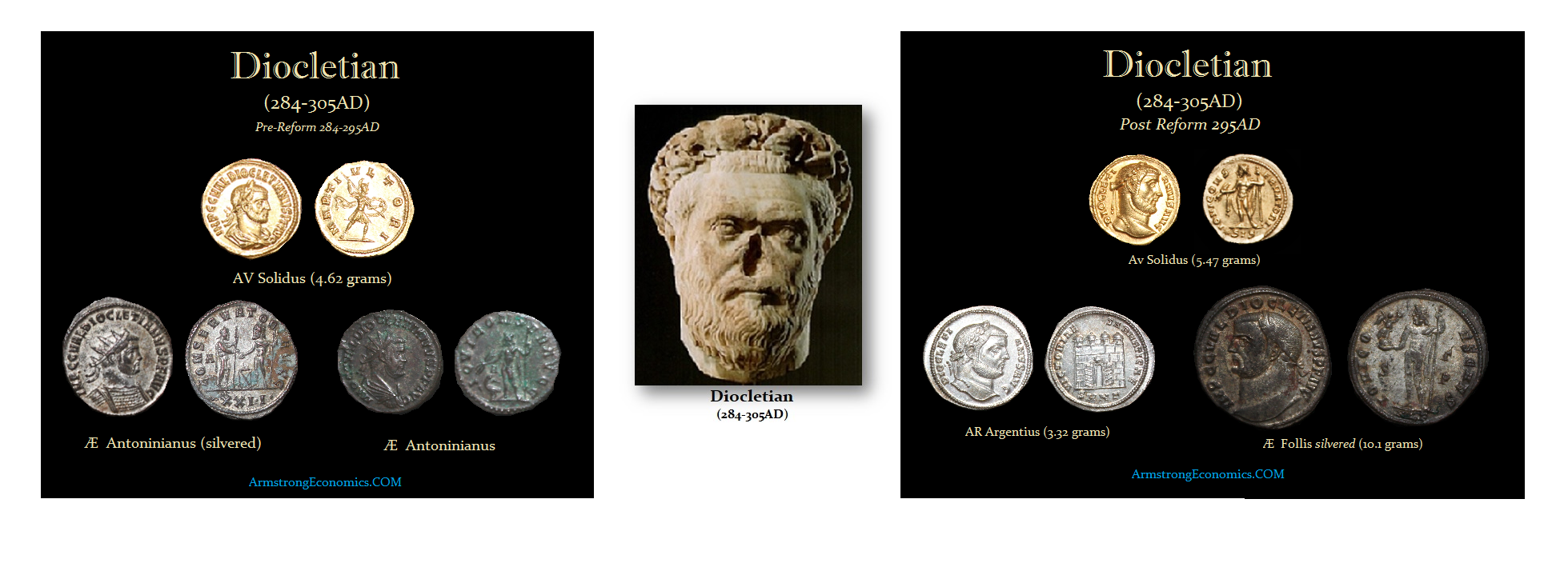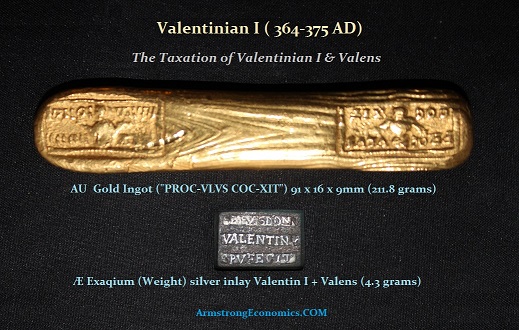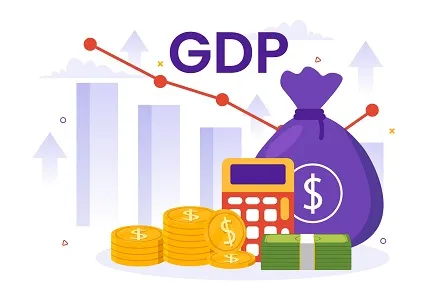QUESTION: Marty, you have said that when the currency collapses, all tangible things become money in a barter sense. I believe you were talking about the collapse of hyperinflation in Germany. Has that been consistent throughout history?
Thank you for a fantastic WEC
PK
ANSWER: Oh, absolutely. This is the standard reaction within society. You must understand that all the theories of the Austrian School of Economics are quite limited. They focused on a period when money in the FX markets simply traded based upon the metal content. There was no premium to one currency over another because of a superpower status as we have today with the US dollar or in ancient times in terms of Persia, Athens, Alexander the Great, or Rome. All of their coinages were imitated establishing that the metal content was only the base value. They carried a premium over the metal content based upon their economic dominance.
Emperor Diocletian completely restructured the Roman tax system. In the wake of the Monetary Crisis of the 3rd Century, the purchasing value of the coinage collapsed, and thus he was forced to requisition supplies from the provinces in order to allow the government to continue to even function.
Diocletian (284-305 AD), therefore, transformed this requisition into a tax, replacing the old monetary forms of taxation. Diocletian transformed that taxes would be paid in kind, that is, in the form of products such as supplies and food. This gave Diocletian the opportunity for a massive reorganization of how the empire imposed taxation. Diocletian and his administrators came up with a basic unit of taxation, iuga, which was maybe called capita. The iuga was based on land and labor, but in order to be fair, it also took into account the fertility of the land, the
value of the local crops, etc. Consequently, using this information the Roman government could calculate the expected productive output of the Roman Empire as a whole on a year-to-year basis. To also accomplish this, he imposed an empire-wide census.
Only after the Roman currency was restored and Diocletian reintroduced silver coinage did the government continue to collect taxes in coinage, but it was now more definitive based upon production. Hence, the commodities were then translated into coinage.
Thus, you can see that during the Monetary Crisis, the Roman state refused to accept its own coinage and imposed taxes to be paid in raw commodities.
Nearly 100 years later, once again, the taxation declined to accept its own coins for many were clipped and counterfeited. Under Valentinian I (364-375 AD), the taxes were imposed in metal content. You would pay in the coin, the tax collector would melt them down, and your taxes were determined purely in metal content.
There are numerous examples from history that show what to expect when the government no longer accepts its own currency in payment for taxes.


